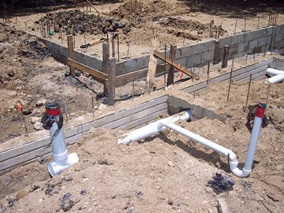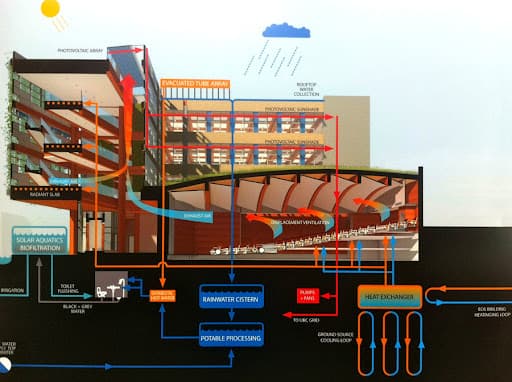We've found this great article relating to The Inner Workings of Your Home's Plumbing listed below on the web and figured it made good sense to write about it with you over here.

Understanding just how your home's pipes system works is essential for every single property owner. From delivering clean water for drinking, cooking, and showering to securely getting rid of wastewater, a properly maintained pipes system is important for your household's health and comfort. In this comprehensive overview, we'll discover the complex network that comprises your home's plumbing and offer tips on upkeep, upgrades, and taking care of typical problems.
Introduction
Your home's pipes system is greater than simply a network of pipes; it's a complex system that guarantees you have accessibility to clean water and efficient wastewater removal. Recognizing its elements and exactly how they interact can assist you prevent pricey repair work and make certain whatever runs efficiently.
Fundamental Components of a Pipes System
Pipes and Tubes
At the heart of your plumbing system are the pipelines and tubing that bring water throughout your home. These can be made of different materials such as copper, PVC, or PEX, each with its benefits in terms of toughness and cost-effectiveness.
Fixtures: Sinks, Toilets, Showers, and so on.
Fixtures like sinks, bathrooms, showers, and bath tubs are where water is utilized in your house. Understanding exactly how these components connect to the pipes system helps in identifying troubles and planning upgrades.
Shutoffs and Shut-off Points
Valves regulate the flow of water in your pipes system. Shut-off shutoffs are important throughout emergencies or when you require to make repair services, allowing you to isolate parts of the system without interfering with water flow to the entire residence.
Water Supply System
Key Water Line
The major water line connects your home to the local water or a private well. It's where water enters your home and is dispersed to numerous fixtures.
Water Meter and Pressure Regulatory Authority
The water meter measures your water usage, while a stress regulatory authority ensures that water streams at a risk-free stress throughout your home's plumbing system, avoiding damages to pipelines and fixtures.
Cold Water vs. Hot Water Lines
Comprehending the difference in between cold water lines, which supply water directly from the primary, and warm water lines, which lug heated water from the water heater, helps in fixing and preparing for upgrades.
Drainage System
Drain Piping and Traps
Drain pipes bring wastewater far from sinks, showers, and commodes to the sewer or sewage-disposal tank. Catches prevent drain gases from entering your home and additionally trap debris that can create clogs.
Air flow Pipelines
Ventilation pipes allow air right into the water drainage system, preventing suction that might reduce water drainage and cause traps to vacant. Correct ventilation is vital for keeping the honesty of your plumbing system.
Significance of Correct Water Drainage
Ensuring appropriate drain protects against back-ups and water damage. Routinely cleaning up drains and keeping catches can avoid pricey repairs and prolong the life of your pipes system.
Water Heating System
Kinds Of Hot Water Heater
Hot water heater can be tankless or conventional tank-style. Tankless heating units warmth water on demand, while storage tanks save warmed water for immediate use.
Updating Your Pipes System
Reasons for Upgrading
Updating to water-efficient components or changing old pipes can enhance water high quality, lower water bills, and enhance the worth of your home.
Modern Pipes Technologies and Their Advantages
Explore innovations like wise leakage detectors, water-saving toilets, and energy-efficient water heaters that can save money and minimize ecological influence.
Cost Considerations and ROI
Determine the in advance prices versus lasting savings when considering plumbing upgrades. Numerous upgrades spend for themselves with minimized energy costs and less repairs.
How Water Heaters Connect to the Plumbing System
Comprehending exactly how hot water heater connect to both the cold water supply and hot water distribution lines helps in identifying problems like inadequate hot water or leaks.
Maintenance Tips for Water Heaters
Frequently purging your hot water heater to eliminate debris, inspecting the temperature settings, and examining for leaks can prolong its life expectancy and improve energy efficiency.
Common Plumbing Issues
Leakages and Their Reasons
Leakages can take place as a result of maturing pipes, loose fittings, or high water pressure. Addressing leakages without delay stops water damage and mold growth.
Clogs and Clogs
Obstructions in drains pipes and bathrooms are typically caused by purging non-flushable items or a build-up of oil and hair. Utilizing drain screens and bearing in mind what drops your drains pipes can avoid clogs.
Indicators of Pipes Issues to Watch For
Low water stress, sluggish drains, foul odors, or abnormally high water expenses are signs of prospective pipes problems that must be resolved quickly.
Plumbing Upkeep Tips
Regular Evaluations and Checks
Arrange yearly pipes evaluations to capture problems early. Search for signs of leakages, rust, or mineral build-up in faucets and showerheads.
Do It Yourself Maintenance Tasks
Simple jobs like cleaning tap aerators, looking for toilet leakages utilizing dye tablet computers, or insulating revealed pipes in cold environments can avoid significant plumbing concerns.
When to Call an Expert Plumber
Know when a pipes problem calls for expert expertise. Trying complex repair services without proper expertise can result in even more damage and greater repair work prices.
Tips for Decreasing Water Use
Straightforward practices like dealing with leaks without delay, taking much shorter showers, and running full lots of laundry and meals can conserve water and lower your energy bills.
Eco-Friendly Pipes Options
Consider sustainable pipes materials like bamboo for floor covering, which is durable and eco-friendly, or recycled glass for kitchen counters.
Emergency Readiness
Actions to Take During a Pipes Emergency situation
Know where your shut-off valves lie and just how to switch off the supply of water in case of a ruptured pipe or major leakage.
Relevance of Having Emergency Get In Touches With Convenient
Keep contact info for neighborhood plumbers or emergency solutions conveniently available for quick action throughout a plumbing crisis.
Ecological Influence and Preservation
Water-Saving Fixtures and Home Appliances
Mounting low-flow taps, showerheads, and toilets can considerably lower water usage without sacrificing performance.
Do It Yourself Emergency Situation Fixes (When Applicable).
Temporary repairs like utilizing air duct tape to spot a dripping pipe or placing a container under a leaking tap can decrease damages up until a professional plumbing shows up.
Final thought.
Comprehending the composition of your home's pipes system encourages you to keep it properly, conserving money and time on repair services. By adhering to normal upkeep regimens and remaining educated concerning modern-day plumbing modern technologies, you can guarantee your pipes system runs successfully for several years to come.
Understanding Your Home Plumbing System: A Comprehensive Guide
Plumbing System: The Lifeline of Your Home
At its core, the plumbing system is designed to perform two primary functions: bring fresh water into your home and remove wastewater. The system is a network of pipes, fixtures, and other components that transport water and sewage. Residential plumbing systems include potable water supply lines, drain-waste-vent (DWV) systems, and various plumbing fixtures that make water use in daily tasks possible.
Key Components:
Water Supply: This part of your plumbing system brings municipal water into your home, passing through the main water supply line. It s responsible for supplying all water needs, from drinking to bathing.
Drainage System: It carries waste and water away from your home to the sewer or septic system. This system includes all the piping within your home that leads to external sewage or septic systems.
Vent System: An essential yet often overlooked component, the vent system allows sewer gases to escape and lets air into the drainpipes, ensuring water and waste move correctly through the system.
Fixture: More Than Just Taps and Toilets
Plumbing fixtures are the most interactive parts of the plumbing system, including faucets, showers, toilets, and sinks. Each fixture is connected to the plumbing system and plays a role in either the delivery of freshwater or the disposal of waste and wastewater.
Types of Fixtures:
- Faucets and Sinks: Used for washing hands, dishes, and other daily water needs.
- Toilets: Dispose of human waste through the sewage system.
- Bathtubs and Showers: Provide bathing facilities, requiring both hot and cold water supply.
Water Supply: The Source of Life
The water supply system is a critical component, ensuring that potable water is available throughout your home for various uses, including drinking, cooking, and cleaning. This system consists of pipes that distribute water to different parts of the house, controlled by valves to regulate the water flow.
Types of Plumbing: Materials and Methods
Various types of plumbing systems and materials are used in residential settings, each with its advantages and applications. From copper and PVC pipes for water supply to cast iron and ABS for drainage, the choice of materials can impact the longevity and efficiency of your plumbing system.
https://intownplumbingtx.com/articles/home-plumbing-system-guide/

I am just very interested by Understanding Your Home's Plumbing Anatomy and I hope you appreciated our blog posting. Do you know about someone else who is interested in the niche? Be sure promote it. Many thanks for your time invested reading it.
Recurring Service Plans
Comments on “Why The Structure of Your Home's Plumbing System Matters”